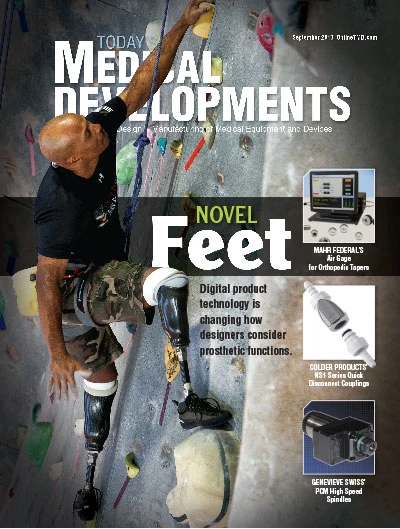 The U.S. Food and Drug Administration (FDA or “the agency”) recently began putting into practice a new refuse to accept (RTA) policy that affects medical device companies. The new policy impacts virtually all companies seeking premarket clearance for medical devices through the 510(k) notification process. Adhering to the guidance and principles outlined in the FDA’s Dec. 31, 2012, Guidance for Industry and Food and Drug Administration Staff - Refuse to Accept Policy for 510(k)s (RTA Guidance) should help companies seeking 510(k) clearance for devices. This new RTA policy could create delays in the acceptance and processing of a company’s 510(k) notifications. This article outlines steps companies can take to ensure that 510(k) notices are completed effectively under the new RTA Guidance.
The U.S. Food and Drug Administration (FDA or “the agency”) recently began putting into practice a new refuse to accept (RTA) policy that affects medical device companies. The new policy impacts virtually all companies seeking premarket clearance for medical devices through the 510(k) notification process. Adhering to the guidance and principles outlined in the FDA’s Dec. 31, 2012, Guidance for Industry and Food and Drug Administration Staff - Refuse to Accept Policy for 510(k)s (RTA Guidance) should help companies seeking 510(k) clearance for devices. This new RTA policy could create delays in the acceptance and processing of a company’s 510(k) notifications. This article outlines steps companies can take to ensure that 510(k) notices are completed effectively under the new RTA Guidance.
New Refuse to Accept Policy
The FDA began implementing its new 510(k) refuse to accept policy informally following issuance of the RTA Draft Guidance Document in August 2012, with formal implementation begun following release of the final guidance on Dec. 31, 2012. According to the Draft Guidance Document, the purpose of the agency’s updated RTA policy is to, “assess whether a 510(k) notice meets a minimum threshold of acceptability and should be accepted by FDA for substantive review.” The goal is to provide a more efficient approach to ensuring that safe and effective medical devices reach patients as quickly as possible.
The FDA now operates under its new RTA policy, which includes detailed checklists for whether a submission should be accepted for additional substantive review at the agency. Under this policy, the FDA performs an early review of a 510(k) submission against specific acceptance criteria listed in the RTA Guidance. Mostly, the checklist focuses on whether the basic required sections for a 510(k) have all of the information the FDA needs to do an in-depth review of the submission. The checklist touches on areas such as: administrative items; device description; substantial equivalence discussion; proposed labeling; sterilization; shelf life; biocompatibility; software; EMC and electrical safety; performance data; and performance characteristics for in-vitro diagnostic devices. For each of these sections, the checklist items only apply if they are actually relevant to that submission. For instance, if a company submits a 510(k) for an orthopedic screw, the software section will almost certainly not apply, and the FDA will not hold the sponsor to the software details of the checklist.
The FDA has 15 calendar days from the formal filing date to inform sponsors whether the 510(k) submission has been accepted for review. If a 510(k) is accepted for filing, that means that the FDA will begin the substantive review of the submission with the start of the agency’s review timeline reaching back to the formal filing date. If a 510(k) is not accepted for filing, a company needs to address the deficiencies identified by the agency in a completed version of the RTA checklist that is provided with the RTA decision. A company has 180 days to respond to this written notice. If the FDA remains unsatisfied with the response, this cycle continues until the submission is ultimately accepted for filing.
Steps for Effectively Submitting a 510(k) Under the RTA Guidance
Companies should keep in mind that practices that may have been accepted by the FDA when filing prior 510(k) notices could well be problematic under the agency’s new policies. Moreover, there has been fairly marked variation in how specific branches and divisions within the agency apply the new RTA policy. The steps below can help companies maximize the chances of successfully filing a 510(k) notice under the new RTA policy.
1) Follow Proper Formatting
For both the initial RTA review and FDA’s substantive review of a 510(k) notice, submitters should always strive to have clear, well labeled, and user-friendly submissions. Under the new RTA policy, the FDA is holding companies to a higher standard in terms of the appearance of submissions. Each submission should have a table of contents. It should also have headings or tabs labeling each section of the submission. The FDA now requires that the entire submission be page numbered sequentially, either from the very beginning to the very end of the submission, or separately within each section. All documents and content within the submission should be provided in English or with an English translation.
2) Go Through the Checklist
The agency’s official RTA checklists provide considerable detail concerning what elements are required for different sections of a 510(k) notice. Before submitting a 510(k) notice, it will be to a company’s advantage to review the submission against each of the items in the checklist. It can also be helpful to complete that checklist, then provide this checklist to the FDA as part of the submission. By incorporating the RTA checklist into the submission, a company has the opportunity to show the FDA that all of the relevant items are included in the submission. Since the RTA Guidance instructs submitters to provide a rationale/justification for not including a particular item typically required in 510(k) notices, giving the FDA a completed copy of the RTA checklist also provides the submitter a vehicle to provide an explanation as to why any items in the checklist have been listed as “Not Applicable.” Where particular information is not provided because the submitter decides that information is not applicable to the submission, the submitter should consider providing a justification as to why the information isn’t included.
3) Be Consistent with the Submission
Make sure that descriptive information about the device provided in the main body of the submission is consistent with the description of the device provided in any device labeling. It is also very important to the FDA that the predicate device(s) identified to support a substantial equivalence determination are the same as those listed in the 510(k) Summary and Substantial Equivalence sections. Simply put, inconsistencies in 510(k) submissions that have been identified in requests for additional information in the past may now be used to refuse to accept a submission.
4) Assess Required Testing
One of the driving factors behind the RTA Guidance is that the FDA wants to ensure that all components of the submission necessary for its substantive review are present. For example, if mechanical testing is necessary to demonstrate that a new orthopedic screw is substantially equivalent to a previously cleared screw, the RTA review will almost certainly involve confirming that these data are present in the filing. It is important to note that questions of whether the appropriate testing is included in a submission can easily blur the line between substantive and administrative reviews. RTA reviews are technically limited to assessing a submission for administrative adequacy. Should the agency decide that sufficient information has not been provided to proceed to a substantive review, it may well refuse to accept the submission. This means that sponsors should pay close attention to whether the biocompatibility, electrical safety, and electromagnetic compatibility testing is sufficient prior to filing a 510(k) notice. This includes providing a strong, science-based rationale why data that the FDA could require for a given submission was deemed unnecessary and was not provided.
Summary
The four steps listed above are general thoughts to consider when drafting a 510(k) notice for a medical device. Under the new RTA policy, companies should look carefully at the required checklists for the devices and make sure to provide the FDA either: (1) all of the information the agency would typically expect in a 510(k) notice for that type of device; or (2) a clear rationale why that information is not necessary. Carefully assessing a submission for these issues ahead of filing will help avoid unnecessary back-and-forth with the FDA on RTA issues, exchanges that inevitably delay clearance.
Hogan Lovells LLP
Washington, D.C.
www.hoganlovells.com
About the authors
John J. Smith, M.D., J.D.
John Smith is a partner in the Medical Device Group of Hogan Lovells LLP, resident in the firm’s Washington, D.C., office. Dr. Smith assists his clients in all premarket aspects of FDA medical device regulation, as well as post-market compliance matters.
Kirstin Dunham
Kirstin Dunham is an associate in the Washington, D.C. office of Hogan Lovells. Her practice focuses on premarket and compliance issues at the FDA, with an emphasis on regulation of medical devices.

Explore the September 2013 Issue
Check out more from this issue and find your next story to read.
Latest from Today's Medical Developments
- UCIMU: fourth quarter 2024 machine tool orders on the rise
- Thomson Industries’ enhanced configuration capabilities
- Frequently Asked Questions about AM Post Processing
- How new executive orders may affect US FDA medical device operations
- Midwest DISCOVER MORE WITH MAZAK
- Reshoring survey to provide insight for US industrial policy
- NB Corporation of America's ball splines
- AdvaMed seeks medical technology exemption from all tariffs





